Trying to shoot the moon [500 shots]
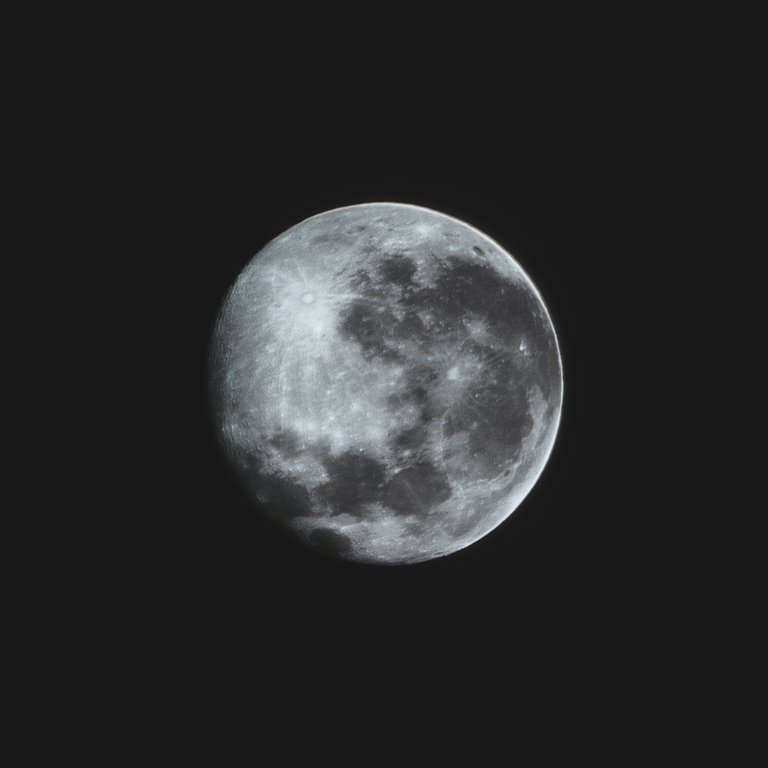
Hey Hive!
Last night, I wanted to try to photograph the moon. I have zero experience with shooting deep-sky photography, or stacking, but became quite curious about it a year ago. I got inspired after seeing a photograph of the deep-sky @fizykfoto, a Polish photographer who creates stunning images of our night sky. It's a pretty underrated style of photography in my opinion, as it is difficult, pretty technical, and requires a lot of patience (and a pretty big investment if you want to do it properly). I used to think it was only possible with expensive and special telescopes or special gear.
You can imagine that I got curious when I found out that we can take photographs of the night sky ourselves. I had to try it out myself. I tried to search for "cheap" try-out setups, but if you want to have decent acceptable images, it will cost you more than 2000 dollars to "try it out". For that money, you probably want to reconsider buying proper gear and save a bit more to get equipment for the next tier.
So, I found this guy on the internet, claiming we can take deep-sky photographs with just a tripod and a kit lens. This guy is highly skilled and an experienced photographer. He's so skilled, he can take a photograph of the Milkyway with his smartphone because he made some tools for it. So I thought, well... if that is possible, I should have better luck with photographing the moon.
Ever heard of specific software, Ruben?
I did but never heard of these three software programs that should make life a lot easier. Why do I always have to do stuff "myself" to make things difficult for me? There's stuff already there, and we can use it for free.
PIPP
So, PIPP is a program that calculates the quality of each image and sorts it for you. This is helpful as it prioritizes images for you which makes it easier to stack them. It's not 100% bullet-proof, but I think it works quite well. Free to use.
AutoStakkert!3
This tool gave me headaches lol. I had no idea what it is all about, or how it works (I just downloaded it yesterday). So, as the name suggests, it automatically stacks images for you. I wonder if this also works for product photography. That would be insane. Free for non-commercial use.
RegStax6
While this tool does the same thing as AutoStakkert!3, it also allows you to sharpen your images, which AutoStakkert!3 does not. "Wow, what the..." was my first reaction when I tried it out. The amount of detail that you can recover is insane.
First and Second Attempt
First, I used my 105mm Sigma, but I found that the moon was way too small to make up for a good-quality image. So, I switched to a 500mm Rokinon mirror lens. This lens came for free with my Canon 5D Mark II and I didn't bother to use it because the quality of the photographs is just bad. But, for training purposes and to see if I could photograph the moon, this lens came in pretty handy.
So, with the Sigma, I stopped at clicking 100 images. I continued with my Rokinon and took 180 images in two sequences. This is supposed to be "enough" data for PIPP. While I was just outside of my house, it was easy for me to get back inside, load the photographs in, to see what results I would come up with.
Focussing on the moon is pretty hard with this mirror lens. It's never 100% sharp.

I followed a few tutorials on how to use PIPP and AS!3, but I feel that the original test file that comes from PIPP worked way better than the AS!3 files. This makes me curious... is it the software, or is it the number of bad shots that I took?
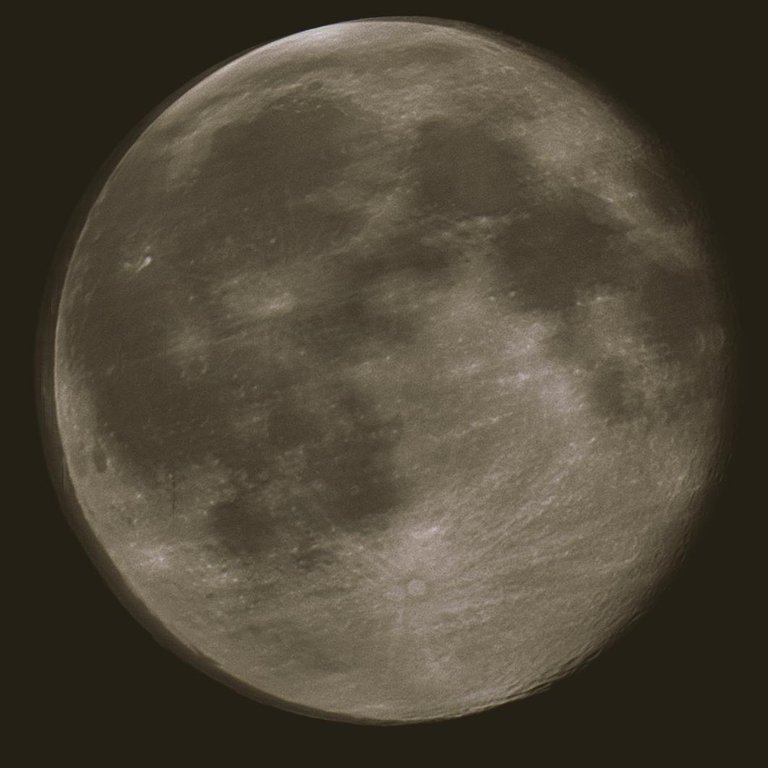
You can see a lot of detail in the photographs. But you can also see a lot of (motion?) blur in the photograph. It seems that stacking did an awful job as you can see two craters near each other which is just one. Still, if I see through the blur, I was amazed by the number of details that is visible in the image. Now I just needed to make it sharp.
3rd attempt
Now, I just had to make sure my shutter speed was 2x my focal length, and I added a little bit more just to be safe. Unfortunately, the Rokinon lens is very fragile and sensitive. I'm guessing that that may be the culprit. Anyway, I decided to go for 430 shots that I could stack to get a better picture of the moon.
I didn't get much better results, other than playing with the settings in PIPP and RegStax6. I used AS!3 a couple of times more, but the results were similar to the above. They weren't well blended, so I'm pretty confident it is due to the "camera shake".
I also noticed some sort of grid popping up in the 'final' image, which was weird to see. Zoomed in at 100% you wouldn't notice, but if you would zoom out, there is clearly something going on there that doesn't feel right.
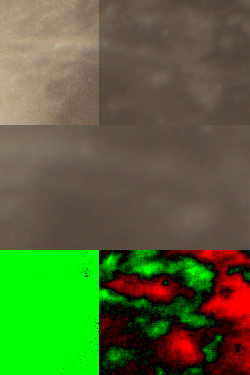
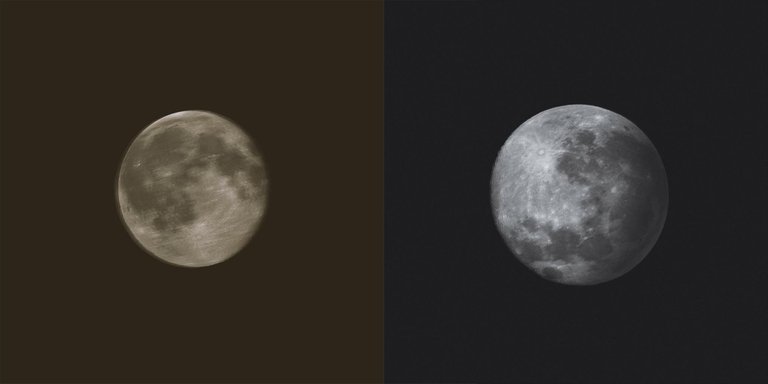
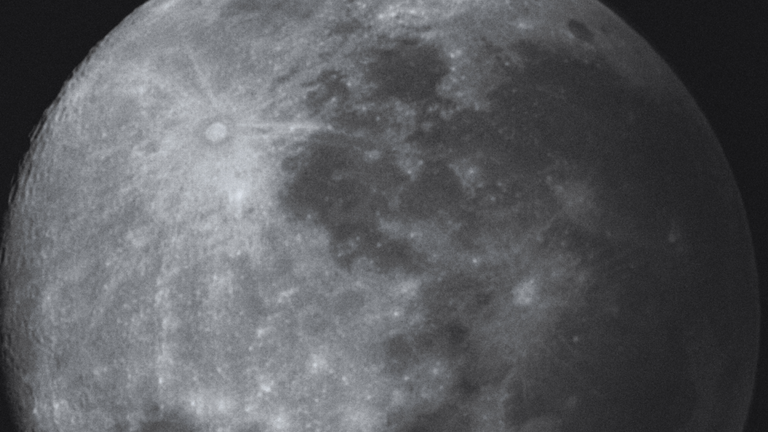
This is unfortunate because it does seem it is a bit better blended.
Final attempt
I decided to stack get of them through PIPP, I'm not sure if this made any difference, but the test file looked a lot sharper. Still not as sharp as I wanted it to be, but still amazed by how this Rokinon 500mm lens is capable of getting this much data and detail from the moon. Amazing. I changed some settings in RegStax6 and did some final post-processing.

This is by far the "best" shot I captured of the moon
Even though I've made more visually appealing photographs of the moon, this is by far the best shot in terms of detail extraction of the moon that I made. I'm seriously considering buying a telescope and playing again. But perhaps, I'll first try to photograph Deepsky with my Sigma, or my wide-angle lens.
I started around 1:30 AM and finished around 5:30. Lol. I learned quite a lot and had some good quality Moonlight. Not sure if there's Vitamin D to be absorbed, but who knows? I'm glad that I finally got into action, pretty much a signal the Vitamin D is kicking in.
Oh yeah, before I forget... Shout out to Fizykfoto for inspiring me (you probably didn't know :D), I believe he is quite new to Hive, so check him out. Also, I'm pretty interested in how @fizykfoto produces his deep-sky photographs, I think he can teach those who are interested in trying out to photograph the night sky a lot. So who knows I can inspire him to share his knowledge with us on Hive!
Cheers,
Ruben
https://twitter.com/3380382322/status/1622967285337018369
The rewards earned on this comment will go directly to the people( @rubencress ) sharing the post on Twitter as long as they are registered with @poshtoken. Sign up at https://hiveposh.com.
I like your persistence and that you don't just give up 🙂 I'm sure this was not your last attempt and I already see you purchasing that telescope 🙂
Looking forward to sharper photos of the moon 😉
Haha, oops... I didn't even notice to look at the time, at the time when I was done I was like... Okey, sleep or continue? Nah, should sleep now.
I hope I can make up my mind about getting one eventually, but putting money aside isn't a bad idea until I know which one to get.
Me too! Already got a tip from a friendly Tweeter!
It must worth a try about the tutorial you've seen and now you did a great job in capturing that beautiful moon!😍 Well, looking forward to more of your shooting in this particular item, the moon. Have a nice day!
I would love to have a telescope too but for nebulas and galaxy photographing. For the moon, no need.
This is with 600mm lens, crop sensor so 900mm, single shot, no stacking.
Dang, that's a powerful shot of the moon @Greddyforce! Madness, you got a 600mm prime? I should try to photograph in crop mode as well, although it doesn't magnify, it just resizes the sensor.
Try stacking please. PLEASE. I bet you'd make an extraordinary photograph!
No, it wasn't a prime, 150-600mm. I don't own it unfortunately, I lent it to test out. Moon was a great subject.
i feel you don't really need stacking if you have the reach for the moon photos. bigger sensor would probably give you more option for cropping.
i think i tried PIPP some time ago with idea to get some nebula or something like that photos but i got kinda nothing :) and i remember there was a process of taking X amount of photos, then same X amount of photos with the lens cap on (so black) and X amount of something else.
There is also all the math on the shutter speed and focal length. with a wide lens you can go for 10-15 seconds and still get stars with no blur, with 135 you probably can go for 3-4 seconds. (there are formulas for that).
So i abandoned the deep sky got back to star trails :D